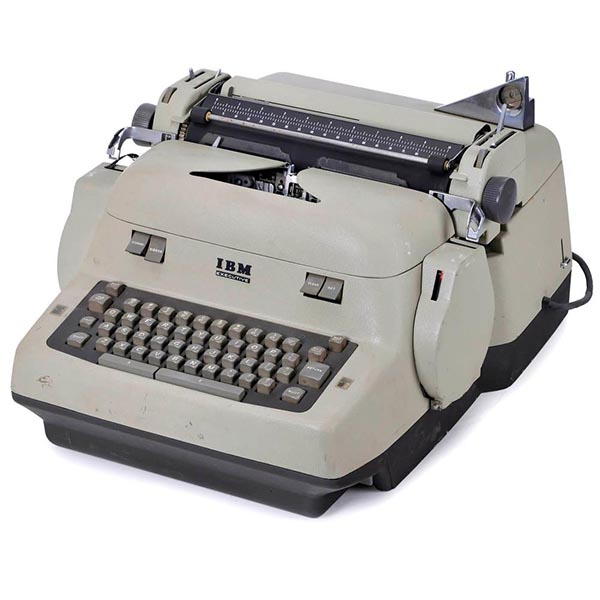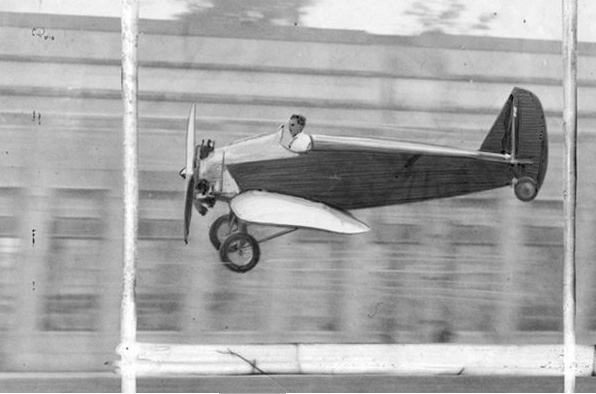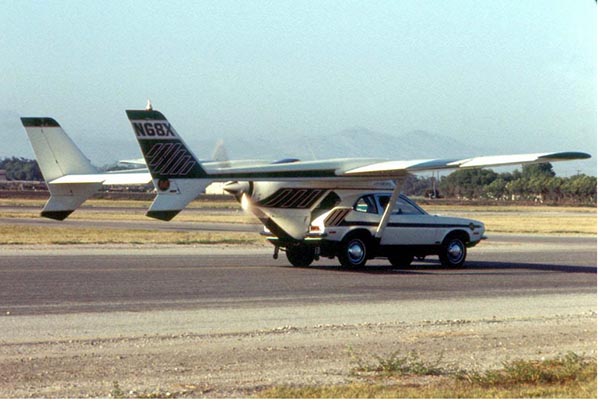
Boxing Day
Some of you may be familiar with McSweeney’s Quarterly Concern, which one is tempted to describe as a literary journal, but that term hardly does it justice. Sure, it regularly (well, quarterly) publishes new literary fiction in an honest-to-goodness physical edition, but one of their hallmarks is using print in unusual and creative ways. They say:
Ever changing, each issue of the quarterly is completely redesigned (there have been hardcovers and paperbacks, an issue with two spines, an issue with a magnetic binding, an issue that looked like a bundle of junk mail, and an issue that looked like a sweaty human head), but always brings you the very best in new literary fiction.
And now they are celebrating their 25th anniversary by publishing their 74th issue as a lunchbox. Says Printmagazine:
McSweeney’s developed, designed, and produced a retro tin lunchbox with a “cover” illustrated by Art Spiegelman (author of the graphic novel Maus). The tin is filled with “author baseball cards,” among other thoughtfully designed trinkets.
The author baseball cards feature a lineup of literary giants, including Sheila Heti, Hanif Abdurraqib, George Saunders, Sarah Vowell, Michael Chabon, Eileen Myles, and more. The pencils feature original pieces by Lydia Davis, Catherine Lacey, and David Horvitz printed on them, with meaning designed to change as you use the pencil. Additional art rounds out the 25th-anniversary issue, in which Art Spiegelman teases out images from random watercolor inkblots.

Pretty neat. Pick up a copy here.
Dime Novel
Once upon a time, if you were an aspiring writer and couldn’t afford your own typewriter, there were actually coin-operated typewriters in places like libraries, hotels, train stations, etc. Says Boing Boing:
To use the typewriter, you would insert a coin or token, and it would unlock for a specific period of time. Once the time was up, the machine would lock again, requiring another coin to continue typing. Typically, these typewriters had a timer mechanism that would stop the carriage return when time ran out, ensuring that users paid for every minute of use.
You can imagine how frustrating that would be if you were on a roll and out of coins. About as frustrating as…using a typewriter these days, perhaps. But any port in a storm, and one famous author who started humbly on a coin-operated typewriter was Ray Bradbury.
In 1949, Ray Bradbury typed a short story, "The Fireman," on a coin-operated typewriter. He spent $9.80, which is equivalent to around $110 today, over a span of nine days in the basement of UCLA's Powell Library to complete his manuscript. The story was the bases for his novel, Fahrenheit 451.
If you have a few hundred euro to drop, you can bid on an IBM coin-operated electric typewriter from 1954.

To be cheeky, you could pay for it in dimes.
Excel-lent Gaming
Here’s the perfect sport for WhatTheyThink’s client engagement coordinator and data wrangler Debbie P.: competitive Microsoft Excel spreadsheeting. We kid you not. The Verge takes a look at the Excel World Championship games, held in Las Vegas. What exactly does competitive spreadsheeting entail?
At 6PM on the dot, Andrew Grigolyunovich, the founder and CEO of the Financial Modeling World Cup
Also, apparently, a thing. Who knew? We continue.
the organization hosting these championships, takes the modular stage in the ballroom. He loads an unlisted YouTube link, which begins explaining today’s challenge, known as a “case.” It’s a puzzle called “Potions Master,” and it goes roughly like this: You’re training to be a potions master in Excelburg, but you’re terrible at it. You have a number of ingredients, each of which has a certain number of associated points; your goal is to get the most points in each potion before it explodes, which it does based on how much of a white ingredient you’ve added.
OK, that’s not even remotely what we would have expected, which would have been something like “format a y-axis for a chart of unemployment claims during a pandemic.” Apparently not.
The Potions Master case, like so many of the puzzles conquered by these competitive Excelers, is not particularly complicated. This is a flashier, faster, deliberately more arcade-y version of spreadsheeting, more like trying to win 10 simultaneous games of chess on easy mode rather than painstakingly taking on a grandmaster. If you like, you can solve the whole thing manually: figure out when the white number gets too high, count the total points until that spot, then double-check it because it’s a lot of numbers, and eventually answer the first question. That’s my strategy, and I think I get it right. Now there are 119 more, worth a total of 1,500 points, and it’s quickly clear I’m not going to finish in the 30 minutes we’ve been allotted.
…Almost everybody who participates in competitive Excel will tell you that the app itself will only get you so far. If you can’t hack the puzzle or figure out what you’re trying to do, it can’t make something out of nothing. Your brain will always matter more than your software. But if you really know how to make Excel sing, there’s simply no more powerful piece of software on the planet for turning a mess of numbers into answers and sense.
They don’t even mention chart colors…
Competitive Excel has been around for years, but only in a hobbyist way. Most of the people in this room full of actuaries, analysts, accountants, and investors play Excel the way I play Scrabble or do the crossword — exercising your brain using tools you understand. But last year’s competition became a viral hit on ESPN and YouTube, and this year, the organizers are trying to capitalize. After all, someone points out to me, poker is basically just math, and it’s all over TV. Why not spreadsheets? Excel is a tool. It’s a game. Now it hopes to become a sport.
The next big competition: change a font in PowerPoint.
Hello, Dolley
Here’s a trivia question: what is the earliest known photograph of a first lady? Via the New York Times, an 1846 daguerreotype of Dolley Madison recently turned up, which Sotheby’s is auctioning off. Dolley, James Madison’s wife, was first lady from 1809 to 1817. (While it’s commonly thought that the first lady is the President’s wife, Thomas Jefferson—who was unmarried while President—had his daughter Martha fulfill the role.) The photo of Dolley was obviously not taken during her tenure in the role, but rather when she was nearly 80. It was taken by the photographer John Plumbe Jr. (His photography business failed not long afterward and any images he shot vanished into the mists of time, until now.)
Dolley Madison created the role of first lady as we know it today — that of uber-hostess, and softer face of power. (The title was coined in President Zachary Taylor’s 1849 eulogy, which hailed Madison as “the first lady of the land for half a century.”) The Dolly Madison bakery brand, founded in 1937, played off her elegant reputation, with the tagline “Cakes and pastries fine enough to serve at the White House.”

There have been other daguerreotypes of her, such as those taken by Matthew Brady in 1849 shortly before her death, but the Plumbe daguerro is believed to be the earliest. Bidding for the pic opened on June 12, and carried an estimate of $50,000 to $70,000. The current bid is $45,000 and the lot closes on June 26, if you have a few extra bucks and want a piece of history.
Here’s another, related trivia question: what is the oldest known photographic image of a US president? That would be a half-plate daguerreotype of John Quincy Adams (the sixth President), taken in 1843. That was sold at auction in 2017 for $360,500.
Don’t Be Tarot-fied
Via Doubleblind magazine, an interesting history of Tarot cards. Although they were invented centuries ago, it is only quite recently that they began to be used for divination.
The earliest precursors to modern-day tarot cards were most likely playing cards in ninth-century China, according to Robert M. Place, tarot deck designer and author of The Tarot: History, Symbolism, and Divination.
What triggered it? The invention of paper in China, and subsequently the Chinese began to make game pieces out of paper: “cards that looked like chess pieces and dominoes. But then they also made this deck called the money deck, which had four suits and pictures of money on it.” As paper and cards spread west, they began to resemble what we know today as playing cards. Different styles of cards evolved in different places. The tarot deck emerged in Italy.
The earliest tarot cards that scholars have identified are hand-painted cards belonging to 15 fragmented decks from 15th-century Milan. The most complete of these decks is known as the Visconti-Sforza tarot. Like their predecessors, these were used for playing games, but they looked similar to current-day tarot cards, with figures like the fool, emperor, empress, and death. In fact, they had all the symbols that are on today’s tarot cards except the devil and tower, Place says.
The early tarot deck came to be used for a game called tarocchi, a predecessor of bridge. Although there was some meager evidence that tarot cards were used for fortunetelling, it didn’t become popular until around the French Revolution in 1789.
Around the same time, other fortunetelling cards called oracle cards were also popping up in countries such as France and Germany, according to Place. A German deck called the Petit Lenormand, for instance, employs symbols such as a dog, a house, and a ship.
And the modern tarot deck emerged in the 20th century.
“There are hundreds and hundreds of different types of tarot,” Farley said. The most popular today is the tarot deck of Arthur Edward Waite and Pamela Colman Smith, which was created in 1909 and was the first to include symbols on the Minor Arcana, or “pip cards,” in addition to the Major Arcana, or “trump cards.” You can also find tarot decks geared toward specific purposes; the Aura-Soma deck, for instance, provides guidance on physical, emotional, and spiritual health, according to Farley.
Some years ago, we came across a Hello Kitty tarot deck, which—now it can be told!—is what we use for our annual printing industry forecast.

Unwanted Graphene
Was it a good week for graphene news? It’s always a good week for graphene news! As much of a wonder material as graphene is, particles dispersed during production of graphene-enhanced materials can pose health risks. So Avanzare and Tecnalia are collaborating on the “European Sunshine project” to develop pioneering Safe and Sustainable by Design (SSbD) strategies for graphene production. From (who else?) Graphene-Info:
Avanzare and Tecnalia are working together to develop a digital twin comprising various sensors installed along an extraction cabin, aimed at mitigating operator exposure to graphene particles. The goal is to develop risk control strategies in industrial processes, optimizing sensor use to reduce energy consumption and maintain a particle-free environment, thus minimizing energy use.
…Depending on extraction regulation, particles can be effectively removed; without extraction, nanoparticles accumulate, posing health risks to operators. Thus, these sensors enable monitoring of nanoparticle exposure. If concentrations become too high, activating extraction systems ensures a safe environment.
What Have the Romans Ever Done for Us?
Some examples are provided here, but of course the roads go without saying. And if you wanted to get a sense of the ancient Roman road network, via Laughing Squid, Sasha Trubetskoy of Sasha’s Maps did some research and turned the Roman roads circa 125 CE into a modern subway map. She says:
It’s finally done. A subway-style diagram of the major Roman roads, based on the Empire of ca. 125 AD. The lines are a combination of actual, named roads (like the Via Appia or Via Militaris) as well as roads that do not have a known historic name (in which case I creatively invented some names).

Now, mind you, it’s probably a safe bet that few Romans would have actually traversed this network, as there were better methods of long-distance travel, as Trubetskoy points out:
How long would it actually take to travel this network? That depends a lot on what method of transport you are using, which depends on how much money you have. …However, no sane Roman would use only roads where sea travel is available. Sailing was much cheaper and faster – a combination of horse and sailboat would get you from Rome to Byzantium in about 25 days, Rome to Carthage in 4-5 days.
So about the same as from Köln to Düsseldorf.
The Wind at Your Back
Those of us experiencing this week’s heatwaves complain, sure, but often from our climate-controlled homes and offices. Not everyone has that luxury of course, so, via Core 77, here’s what looks like would be a welcome fashion accessory.
The Tajima Clip-on Belt Cooling Fan Body 2 is a wearable climate control device. Slip the lightweight unit onto the belt and around your waist, and it will then blow a powerful cooling breeze into your jacket, shirt, and other overalls or items of clothing. A must-have for people who work in hot and difficult conditions, this full set includes the easy-to-use belt and rechargeable lithium-ion battery.

OK, the video is a little silly, but if it works as advertised, who are we to judge?
Fly Me to the Moon Supermarket
Ah, the flying car. The emblematic example of how science-fiction set unrealistic expectations about the future. It’s 2024, by gum. Where are our flying cars?
Well, it’s not for lack of effort, the most recent being, via Core 77, LuftCar, a US start-up whose eponymous vehicle is a hybrid “eVTOL” (electric vertical take-off and landing) aircraft and an on-road vehicle. They had the technical specs down pat, but needed help with industrial design so as to better pitch the concept to investors.
Luftcar had an initial CAD model developed for rough form factor and basic functionality, but they needed a design studio with experience in both aerospace and automotive design to elevate the maturity and realism of their concept for investor pitching and funding rounds. This startup chose Sundberg-Ferar because of their unique expertise in developing road-worthy vehicle designs, surface development for optimal aerodynamics, and solutions that hold up to regulatory requirements.
One of the things they realized is that they needed more storage space.

Basically it’s a minivan with a detachable wing section that renders it airborne.
Interestingly, this is not a completely new idea. And, in fact, Henry Ford himself believed that the future was in flying cars. In 1940, he said, “Mark my words: a combination airplane and motorcar is coming. You may smile, but it will come.” You have to give him points for optimism, even if his own attempts at developing such a hybrid vehicle had failed 20 years earlier. Ford had acquired the Stout Metal Airplane Company in 1924 and had wanted to come up with something that was essentially the Model T of the air. Named the Ford Flivver (“flivver” was early 20th-century slang for a “jalopy” which some of us only know from the Star Trek episode “A Piece of the Action,” set on a planet that based their culture on 1920s Chicago gangs), the prototype was a single-seat plane about 15 feet long with a wingspan of around 20 feet.
Only two men ever flew the Flivver. One was Charles Lindbergh, who knew a thing or two about aircraft and thought it was the worst plane he ever flew. The other, more enthusiastic Flivverman was Harry J. Brooks, who had begun as an employee of Ford’s and whose enthusiasm for flight was enough for Ford to make him his official test pilot. In 1928, Brooks made several test flights of the Ford Flivver, which was to culminate in setting a long distance record, flivvering (if it had been commercially successful, it probably would have become a common term) from Dearborn, Mich., to Miami, Fla.

Harry Brooks in the Ford Flivver.
On his first try, he made it as far as North Carolina. A second try, got him to Titusville, Fla., where Brooks had to spend the night making repairs. The next day, he took off to finish the final leg to Miami and, as he was circling over the Atlantic off the Florida coast, the motor quit, and he went down. Wreckage of the plane washed up on the shore, but Brooks’ body was consigned to Davy Jones’ locker. And thus ended Henry Ford’s experiments with consumer aviation. It was just as well; the Great Depression was just around the corner.
Fast forward half a century or so to Henry Smolinski, a graduate of Northrop Institute of Technology’s aeronautical engineering school. In the early 1970s, he founded Advanced Vehicle Engineers (AVE) in Van Nuys, Calif. The company’s effort in the flying car business was a unique one: Smolinski grafted the wings and rear portion of a Cessna onto a Ford Pinto. Called the Mizar, two working prototypes were built.

AVE Mizar, August 1973. (Photo by Doug Duncan, courtesy Creative Commons.)
A few early test flights were not wildly successful, but showed promise. Then, on September 11, 1973, with his usual test pilot unavailable, Smolinski himself took the Mizar for a spin. The problem, it was later reported, was that the wing strut couldn’t support the forces on it, and the right wing folded. The Mizar went down and both Smolinski and an associate were killed. And thus the Pinto-based flying car was not destined to be.
Let’s hope the LuftCar folks have better success.
OK, No Flying Cars, But Still…
Despite some gaps, sci-fi actually has a pretty good track record in anticipating future technologies. LiveScience rounds up 32 sci-fi predictions that did actually come to pass, including:
- 3D printing (think Star Trek’s replicator)
- Video calling
- Cloning
- Humanoid robots and robot limbs (these were a big part of drupa)
- Smartwatches
And more.
V’Ger’s Back!
You gotta hand it to NASA. How much of the technology we had in the 1970s is still functioning—much less functioning while hurtling through interstellar space? Space probe Voyager 1, which launched in 1977, was initially designed to study Jupiter and Saturn, which it did in 1980. Its mission accomplished, it did not go into retirement, but kept on truckin’ through the Solar System until it entered interstellar space in 2012 and has continued sending back data from this mysterious realm. Voyager 1 is now the farthest human-made object in the universe. There was a bit of a panic over the past few months, when it developed communication problems. Via Space.com:
The problems began in November 2023, when Voyager 1 lost its ability to "speak" with us. More specifically, it started sending to Earth unintelligible data instead of its normal 0s and 1s of binary code. Of course, Voyager 1 is 46 years old — ancient for a spacecraft — so it wasn't entirely a surprise that its health might be waning. And that's not to mention that it's in entirely uncharted interstellar territory, some 15 billion miles (24 billion kilometers) from Earth.
So, NASA’s Voyager I team (and we wonder how many of them weren’t even born when it launched) set out to find the problem—and they did.
Controllers identified where the issue was located: the flight data subsystem (FDS), used to “package” data to be sent to Earth. Further sleuthing revealed the exact chip causing the problem, which allowed them to find a workaround. After the team relocated the code to a new location in the FDS, Voyager 1 finally sent back intelligible data on April 20, 2024 — but only from two of its four science instruments. Now, just two months later, Voyager 1’s remaining two science instruments are back up and running, communicating effectively with mission control on Earth.
And it’s still more reliable than Bluetooth.
So now Voyager can continue its mission into deep space, where it can be found by the alien race of living machines and upgraded to the point where it achieves sentience, before returning to earth as an unwitting destructive entity.
Boys and Grills in America
It’s grilling season, and we don’t just mean the temperature. It’s the time of year when we fire up the grill and embrace alfresco dining—or at least alfresco cooking.
But we have been to enough barbecues to know that, well, not everyone has mastered the concept. In the wrong tongs, the best quality steak can become less edible than shoe leather.
But now, thanks to a partnership and promotion between DoorDash and discount supermarket chain Aldi, shoppers can win a one-on-one tutorial from a professional grillmaster. Says Food & Wine:
DoorDash shoppers who purchase fresh meat and seafood from Aldi will be eligible for the promotion, which lasts from June 18 to July 2. Those customers will be entered for a chance to win a $250 credit toward a session with a local private grillmaster so that, in the words of the press release, one can “ensure their quality meat and seafood get the VIP treatment.” In addition to the grilling session, the $250 value includes Aldi meat and seafood, grilling utensils, and seasoning.
If this interests you:
Those who wish to take advantage of the Aldi deal must have the DoorDash app and a DoorDash account. Search for “Aldi” in the app, then click the Grillmaster promo that appears onscreen. From there, you simply select the meat and/or seafood products you wish to purchase and enter the promo code GRILLMASTER, which will automatically enter you for a chance to win the $250 credit. Using the promo code also knocks $5 off the total cost of what’s in your cart.
“Hundreds of shoppers” will be randomly selected and will be notified on July 10 via email.
This Week in Printing, Publishing, and Media History
June 17
1882: Russian pianist, composer, and conductor Igor Stravinsky born.
1898: Dutch illustrator M. C. Escher born.
1901: The College Board introduces its first standardized test, the forerunner to the SAT.
June 18
1466: Italian printer Ottaviano Petrucci born.
1812: Russian author and critic Ivan Goncharov born.
1854: American publisher and founder of the E. W. Scripps Company E. W. Scripps born.
1858: Charles Darwin receives a paper from Alfred Russel Wallace that draws eerily identical conclusions about evolution as Darwin had been developing. Darwin thus races to publish his own conclusions.
1942: Paul McCartney born.
1948: Columbia Records introduces the long-playing (LP) record, which, curiously, is seeing a bit of a renaissance today as a medium for delivering music.
June 19
1623: French mathematician and physicist Blaise Pascal born.
1846: The first officially recorded, organized baseball game is played under Alexander Cartwright’s rules on Hoboken, N.J.’s Elysian Fields with the New York Base Ball Club defeating the Knickerbockers 23–1.
1897: American comedian Moe Howard born.
1934: The Communications Act of 1934 establishes the Federal Communications Commission (FCC).
1947: Indian-English novelist and essayist Salman Rushdie born.
1948: English singer-songwriter Nick Drake born.
1978: Garfield, holder of the Guinness World Record for the world’s most widely syndicated comic strip, makes its debut.
2018: The 10,000,000th United States Patent is issued (“Coherent Ladar Using Intra-Pixel Quadrature Detection,” assigned to Raytheon Company).
June 20
1840: Samuel Morse receives the patent for the telegraph, which becomes the dominant communication method. Until...
...1877: Alexander Graham Bell installs the world’s first commercial telephone service in Hamilton, Ontario.
1928: American saxophonist, flute player, and composer Eric Dolphy born.
[year withheld]: Frank Romano born. Shortly thereafter, was visited by three “iMagi” bearing gold from Gutenberg’s goldsmith shop, a line of type from Ottmar Myrrh-genthaler, and he’ll be Frank-incensed if he reads this.
1975: The film Jaws is released in the United States, becoming the highest-grossing film of that time and starting the trend of films known as “summer blockbusters.”
2003: The Wikimedia Foundation is founded. The Wikimedia Foundation is a nonprofit charitable organization dedicated to encouraging the growth, development, and distribution of free, multilingual, educational content, and to providing the full content of these wiki-based projects to the public free of charge. Most notably, it operates Wikipedia.
June 21
1903: American caricaturist, painter and illustrator Al Hirschfeld is born.
1905: French philosopher and author Jean-Paul Sartre born.
1944: English singer-songwriter and guitarist Ray Davies born.
1957: American author, illustrator, and creator of the Bloom County comic strip Berkeley Breathed born.
1973: WTF: the Supreme Court hands down the decision in Miller v. California 413 US 15, establishing the Miller test for obscenity in U.S. law.
1978: The original production of Tim Rice and Andrew Lloyd Webber’s musical Evita, based on the life of Eva Perón, opens at the Prince Edward Theatre, London.
June 22
1906: Austrian-born American director, producer, and screenwriter Billy Wilder born.
1969: The Cuyahoga River catches fire in Cleveland, Ohio, drawing national attention to water pollution, and spurring the passing of the Clean Water Act and the creation of the Environmental Protection Agency.
June 23
1860: The United States Congress establishes the Government Printing Office.
1868: Christopher Latham Sholes receives a patent for the "Type-Writer."
1910: French playwright and screenwriter Jean Anouilh born.
1912: English mathematician and computer scientist Alan Turing is born.
1926: The College Board administers the first SAT exam.
1969: IBM announces that it will start pricing its software and services separately from hardware—thus creating the modern software industry.
1991: Sonic the Hedgehog is released to American audiences, then to PAL and Japanese audiences a month later, kickstarting the successful Sonic franchise.
2013: American author and screenwriter Richard Matheson dies (b. 1926).















Discussion
Only verified members can comment.